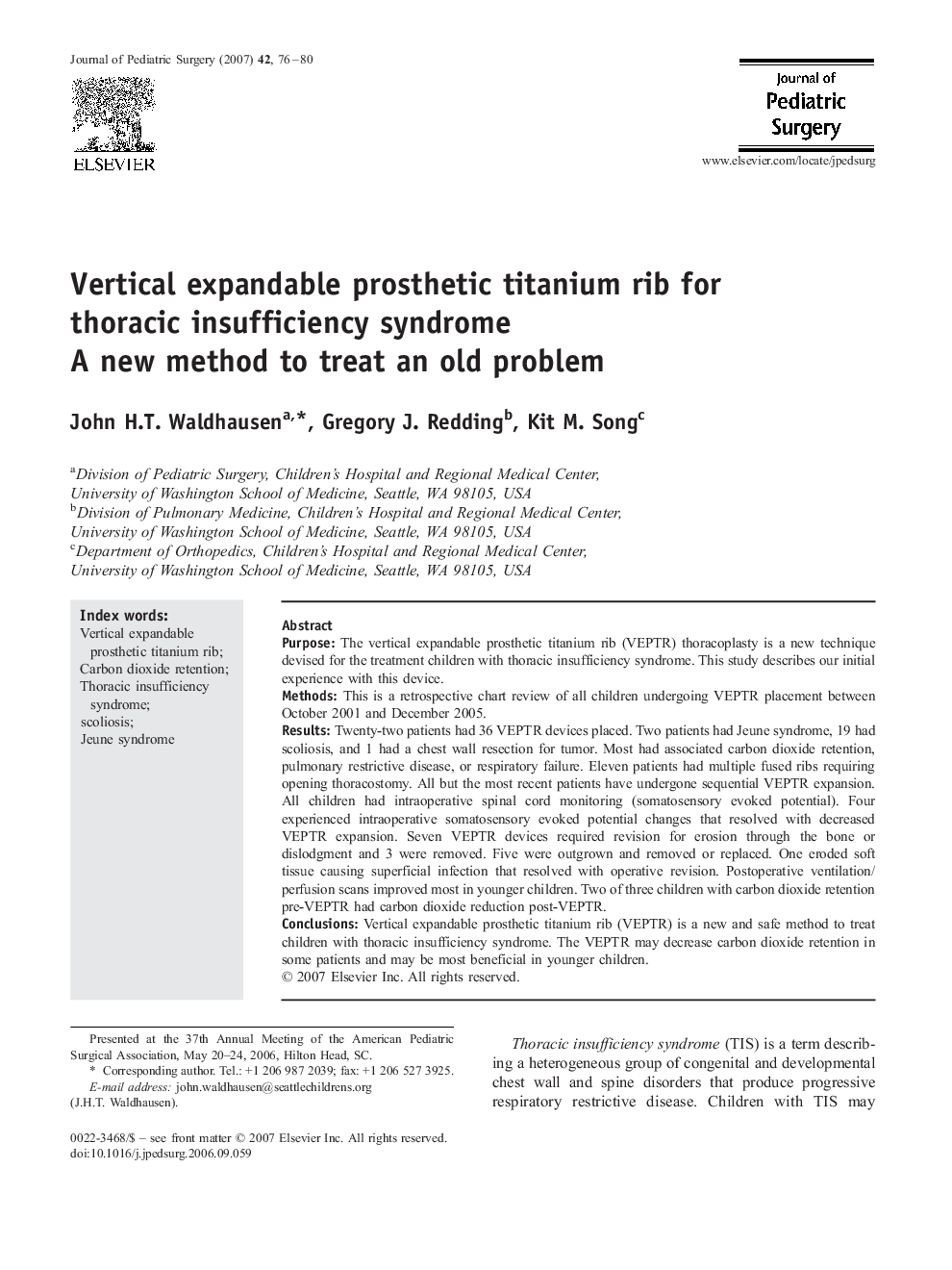| Article ID | Journal | Published Year | Pages | File Type |
|---|---|---|---|---|
| 4160109 | Journal of Pediatric Surgery | 2007 | 5 Pages |
PurposeThe vertical expandable prosthetic titanium rib (VEPTR) thoracoplasty is a new technique devised for the treatment children with thoracic insufficiency syndrome. This study describes our initial experience with this device.MethodsThis is a retrospective chart review of all children undergoing VEPTR placement between October 2001 and December 2005.ResultsTwenty-two patients had 36 VEPTR devices placed. Two patients had Jeune syndrome, 19 had scoliosis, and 1 had a chest wall resection for tumor. Most had associated carbon dioxide retention, pulmonary restrictive disease, or respiratory failure. Eleven patients had multiple fused ribs requiring opening thoracostomy. All but the most recent patients have undergone sequential VEPTR expansion. All children had intraoperative spinal cord monitoring (somatosensory evoked potential). Four experienced intraoperative somatosensory evoked potential changes that resolved with decreased VEPTR expansion. Seven VEPTR devices required revision for erosion through the bone or dislodgment and 3 were removed. Five were outgrown and removed or replaced. One eroded soft tissue causing superficial infection that resolved with operative revision. Postoperative ventilation/perfusion scans improved most in younger children. Two of three children with carbon dioxide retention pre-VEPTR had carbon dioxide reduction post-VEPTR.ConclusionsVertical expandable prosthetic titanium rib (VEPTR) is a new and safe method to treat children with thoracic insufficiency syndrome. The VEPTR may decrease carbon dioxide retention in some patients and may be most beneficial in younger children.
